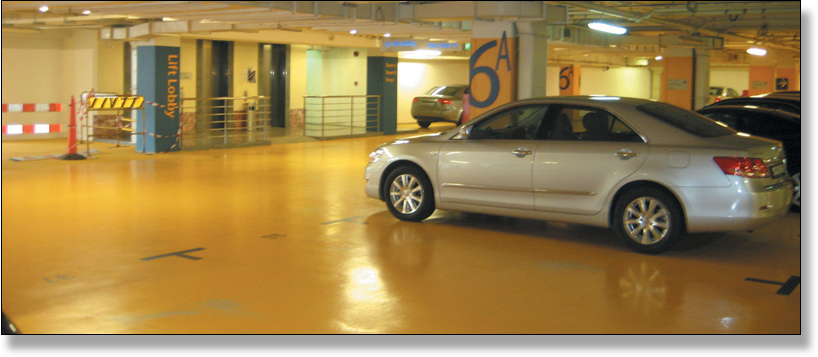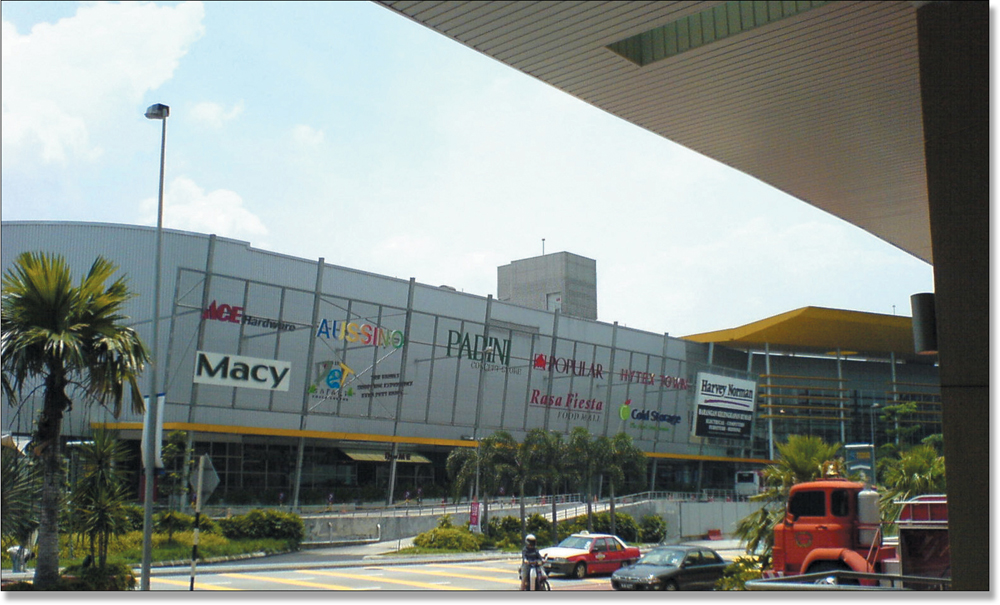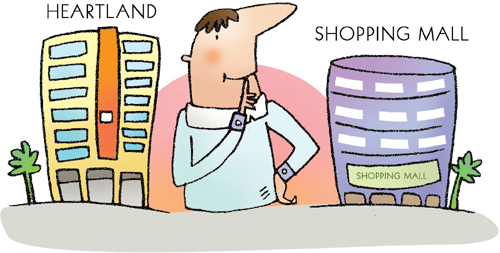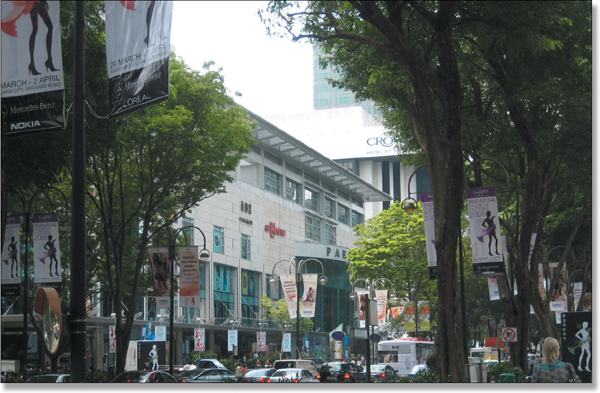Chapter 3. Shop Location and Site
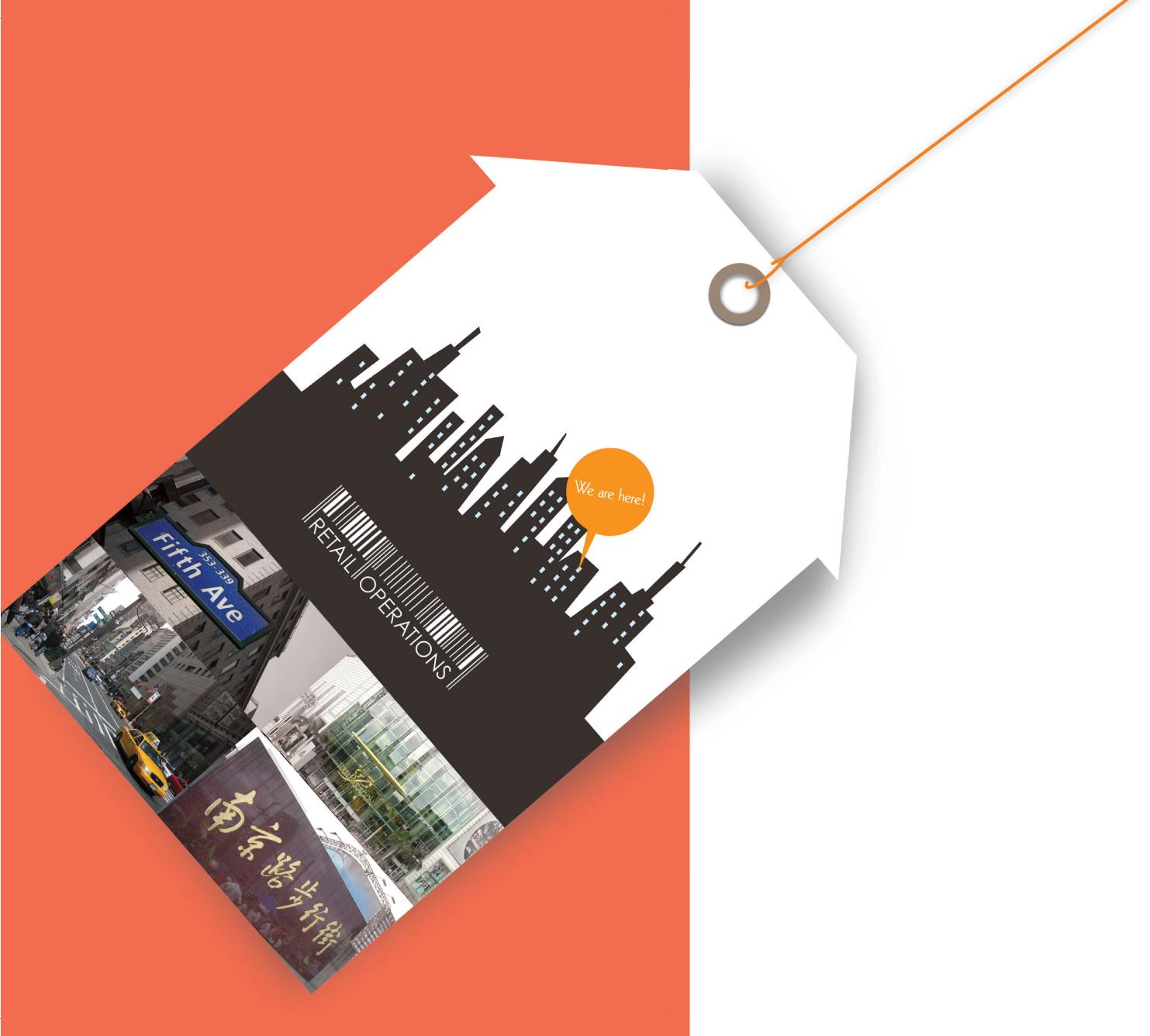
“Location, Location, Location”
— this is one of the most common answers provided by retailers when asked to share the reason for their successes.
Importance of Location and Site
Choosing a shop location is a strategic exercise because it is a decision which has long-term implications on the retailer’s image, positioning and cost.
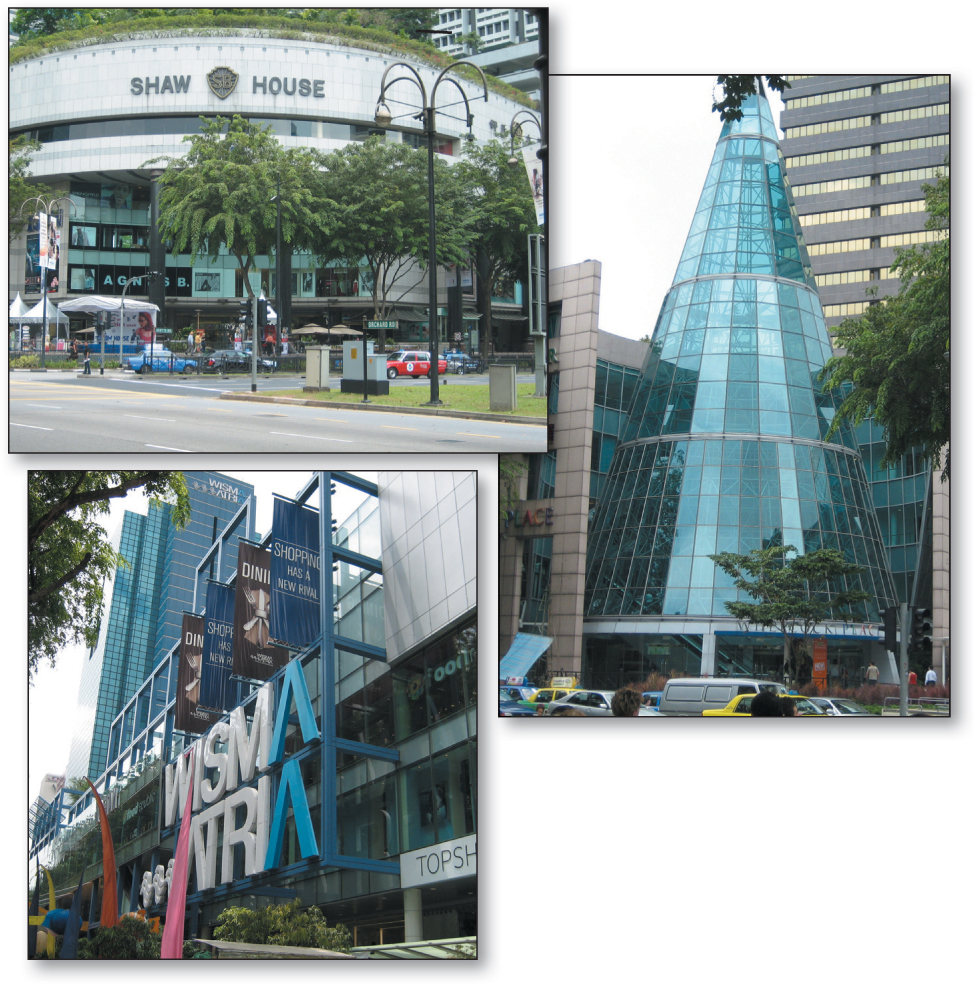
Shopping landmarks in the heart of Singapore Shopping District, Orchard Road — Shaw House, Wheelock Place and Wisma Atria.
A store selling mid-price shopping goods such as ladies apparel can be located in a downtown mall close to a department store. The downtown location enhances the image of the apparel store. The department store is a major anchor tenant and it generates traffic for the apparel store which is located near by. However, the higher rental for a shop at a downtown mall increases operations cost.
Locating at a downtown mall may seem appropriate; however, if the same apparel store’s specific site is next to a fast food restaurant rather than a department store, the effect will be different. Being near to a fast food restaurant may provide the crowd, but it will be the wrong type of customers and to make matters worse, the apparel store will smell of food!
Thus a retailer needs to evaluate the suitability of both the general location and the specific site when deciding shop location. At the same time, retailers need to know that a location suitable for one retailer may not be appropriate for another type of retailer. The same applies to the specific site.
Definitions: Location and Site
Location refers to the general position of a shop — a city district, a neighbourhood area, along a major road or secondary street, and a shopping mall.
Site refers to a shop’s specific spot or unit in the general location. For example: Unit #01-03 in a neighbourhood area.
Evaluation and Selection Guidelines
There are seven steps that can assist retailers in the evaluation and selection process for the ideal location and site.
 Distinguish the Types of Products
Distinguish the Types of Products
The types of products sold by a retailer determine the choice of location for the shop.
Basically, there are three major categories of products: convenience, shopping and specialty goods.
Convenience products usually refer to goods that are low-priced and bought frequently and habitually by consumers. These types of products are sold in many outlets and little sales effort is required. Examples are sweets, potato chips, bread, can drinks and cigarettes. It is important for stores selling convenience goods to be
located in places with many people, that is quantity of people is important.
Shopping products usually refer to mid-priced to high priced goods that are sold in selective outlets. In addition, consumers tend to compare features and prices, and purchase these goods less frequently. More sales efforts are required by the sale associates. Examples are apparels, fashion accessories and furniture. For stores selling such products,
the ‘quality’ of people (the right type of people) passing by the location is important.
Specialty products refer to goods that are more expensive and are bought very infrequently. Substitutes are not considered and these goods are sold at limited outlets. Examples are specific brands or name labels of fashion wear, bags and fine jewellery. These shops are
best located in exclusive malls with compatible brands and labels catering to high-end customers.
 Identify your customers
Identify your customers
The categories of products sold by a retailer influence the types of customers patronising the shop. A retailer needs to have a clear understanding of its customers and their profile as they form the basis for the factors used in the assessment of the type and address of the location chosen. The following questions may help retailers to have a better understanding of their customer segments.
• What is their age range?
• What is their spending power?
• Where do they stay?
• How do they prefer to travel to the store?
• How far are they willing to travel to the store?
 Search for Alternative Locations and Sites
Search for Alternative Locations and Sites
It is preferable that the retailer has more than one choice when assessing the location or site. However, too many alternatives may create confusion as well. Thus the appropriate number of choices should be between two and three.
 Evaluate Location
Evaluate Location
A retailer has to evaluate both the general location and the specific site. Let’s start with the general location. There are seven factors that the retailer can consider when selecting a suitable location.
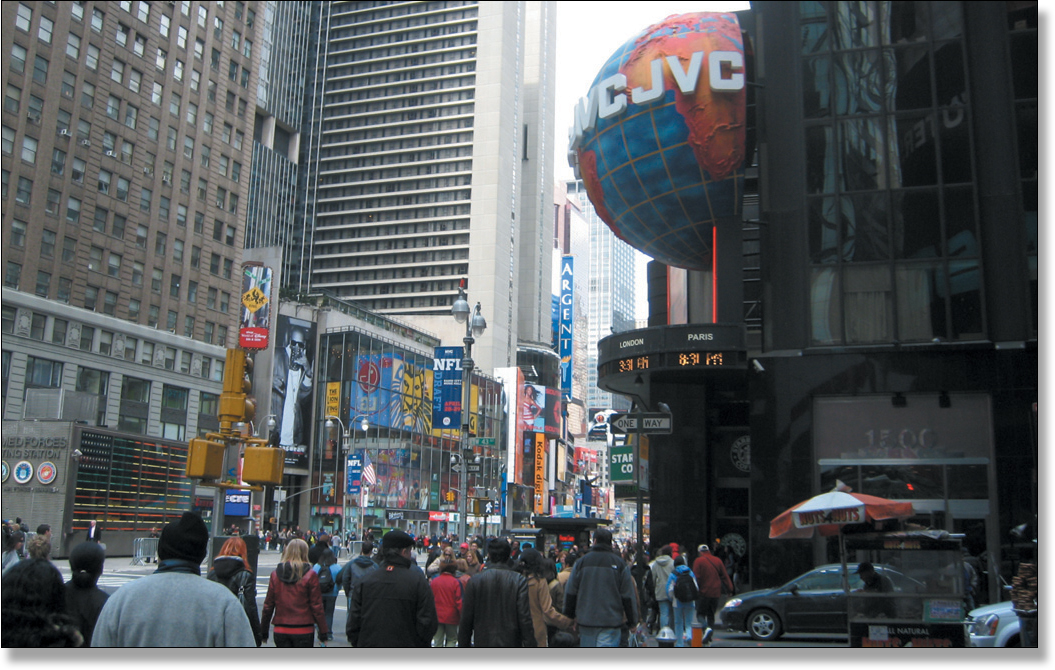
The flow of pedestrian traffic is an important consideration when choosing the location of a store
1. Number and types of pedestrians
This refers to the number and types of people passing by the location. However, not everyone who passes by a location is a potential customer. Usually, very young children are not considered. An accurate pedestrian count includes the following four details:
• Age and gender
The retailer should identify and count the pedestrian flow based on the relevant age and gender of its customers. For example, ladies apparel targeting at teenagers will only consider the number of female teenagers passing by the location.
• Time
Pedestrian count should be carried out at different time intervals within a day and week. For example, the peak and non-peak hours during a normal day and a weekend. If traffic count is only conducted during peak hours, the figure will be inflated.
The retailer may also interview the pedestrians to find out if there are a sufficient number of potential shoppers. People visit the place for many reasons. If an interview is to be conducted, it is important to find out the origin of the shoppers’ trip, their destination, and the stores in which they intend to shop at. The information will provide retailers with a better estimate of the number of potential customers.
• Spot-check
Some retailers revisit the location on another day to verify the information collected earlier.
It is important to note that
when all the other factors of two locations are equally good, the one with the highest number of potential pedestrians is considered the most suitable.
2. Number and types of vehicles
Similar to pedestrian count, retailers who appeal to customers who drive have to analyse the type and quantity of vehicles that pass by the location. A location where there are many private cars is suitable for a posh restaurant. On the other hand, a mini-mart at a petrol station will survive in a location with both private cars and heavy vehicles.
Another aspect of vehicular flow is traffic congestion. Drivers tend to avoid heavily congested roads. Thus a shopping mall located in such an area will not be ideal.
A shopping location has to be accessible so that shoppers are encouraged to visit the place. This is especially true for convenience goods where customers patronise stores that are near to their homes. For locations further away, the distance must be made shorter and easier with the following two criteria:
• Availability of mass transportation
Shops located near a Mass Rapid Transit (MRT) stations, taxi stands with available taxis, and bus stops with ample bus services attract more customers and have a constant flow of shoppers.
• Access from expressways and alternate routes
For the drivers, a location that can be reached via expressways or alternate routes is more popular as a shopping destination as it cut down on traffic jams and saves travelling time on the roads.
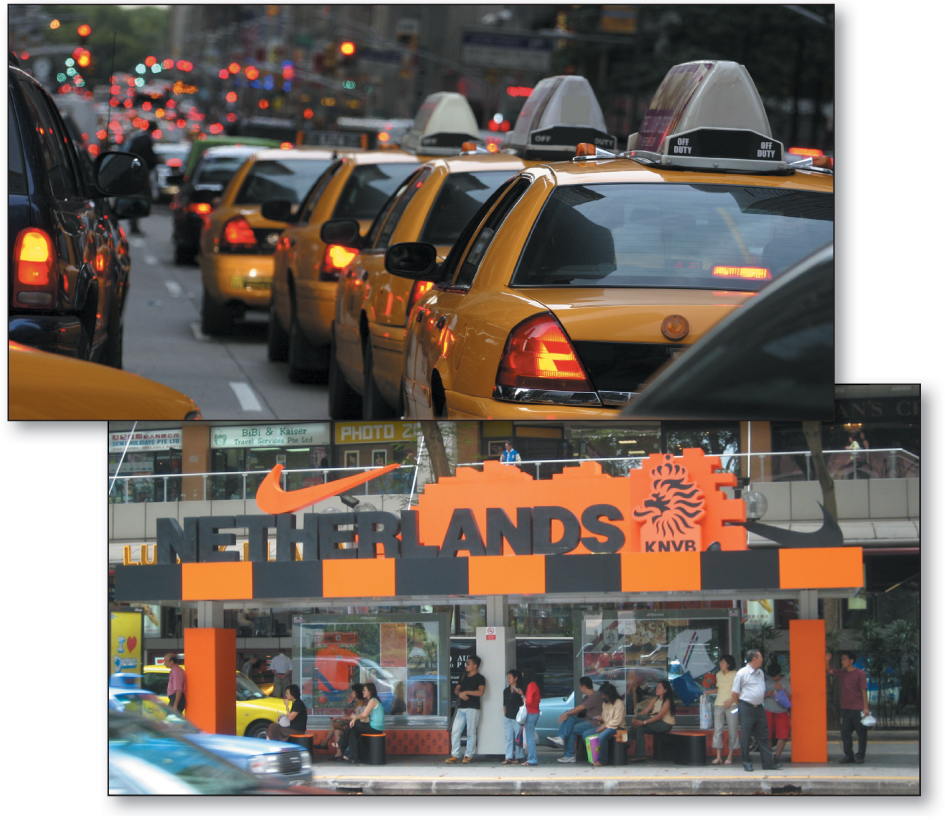
Availability of public transport, such as taxis and buses, is a factor to consider
Parking facilities — clean and brightly lit parking lots in a mall.
4. Parking availability
Customers patronise shopping locations that have ample and cheap parking facilities. This is especially important for retailers who mainly target customers who drive. Availability of parking brings convenience to customers. Customers who buy groceries from a supermarket will want to be able to load their purchases into their cars at nearby parking lots. In addition, as car ownership is on the rise, parking facilities is definitely a plus point for shopping locations. To evaluate the parking facilities of a location, retailers may want to look into the following two factors related to parking.
• Number of parking spots
There must be an adequate number of parking lots. There are cases where insufficient parking lots discourage customers from patronising the shops. Many shoppers choose to go to places where parking is not a problem. After all, customers look forward to a wonderful experience when they go shopping, and parking facilities can either enhance the experience or give a bad impression even before the actual shopping starts.
• Distance to store
Many shopping malls have car parks within the building. This provides convenience and shelter from bad weather.
A shopping mall should have a good mix of tenants to attract the crowds
5. Store organisation
A good shopping location is well planned with balanced tenants and adequate facilities. The following factors should be considered when choosing a location.
• Balanced tenants
There are locations that provide specialised services and/or products such as medical centres, beauty and aesthetic centres, audio-visual equipment, youth fashion clusters and computer-related goods. However, a general shopping location must have a sufficient variety of shops and facilities to attract different segments of customers. Examples: Shops catering to children, young adults, working people, and families; and facilities such as cinemas, food outlets and bowling alleys to cater to shoppers’ socialisation, recreation and entertainment needs.
• Store compatibility
Complementary stores located in the same mall help to generate pedestrian traffic for one another. For a shopping goods retailer, the best location is near other stores selling shopping goods. Example: ladies’ apparel stores and shoes stores. Similarly, different types of food outlets that target the same category of customers will benefit if they are clustered together. Customers like choices and they patronise food places that allow them the flexibility to choose from different types of cuisine. Example: family restaurants, gourmet eateries and special — themed cafes.
6. Regulations
A Retailer interested in a location has to find out if there are any regulations pertaining to the operations of the shops in the place or mall. Some of these regulations are as follows:
• Business hours are fixed.
• Usage of common areas outside the shop is restricted.
• Clutters and blockage of walkways are not permitted.
• Types of signs used must be within established rules.
• Scope of renovation permitted in the shop has to be adhered to.
• Malls located within or next to hotels in city areas may require shops to keep some lighting on after shopping hours.
• Locations in the city area may require drivers to pay a surcharge when entering the central business district.
7. Condition and age of the building
Whether it is pedestrians or drivers, they will be attracted to shopping locations or malls that are well designed, big, new or upgraded.
 Assess Site Suitability
Assess Site Suitability
A good general location is not enough. A retailer has to ensure that the specific site at the location has to be equally suitable. The following five factors will help the retailer to choose the most appropriate site.
A good site is one that can be seen by pedestrian or vehicular traffic. Shoppers hesitate to go to a quiet side street or an excluded corner in a mall. A shop located at the entrance of a mall or on a major road has high visibility. Some successful malls are designed in such a way that the shops face the central courtyard, and when shoppers enter the malls, they will be able to see the shops on the first and second levels. In some malls, the signs of the shops on the third level can be seen even at the first level.
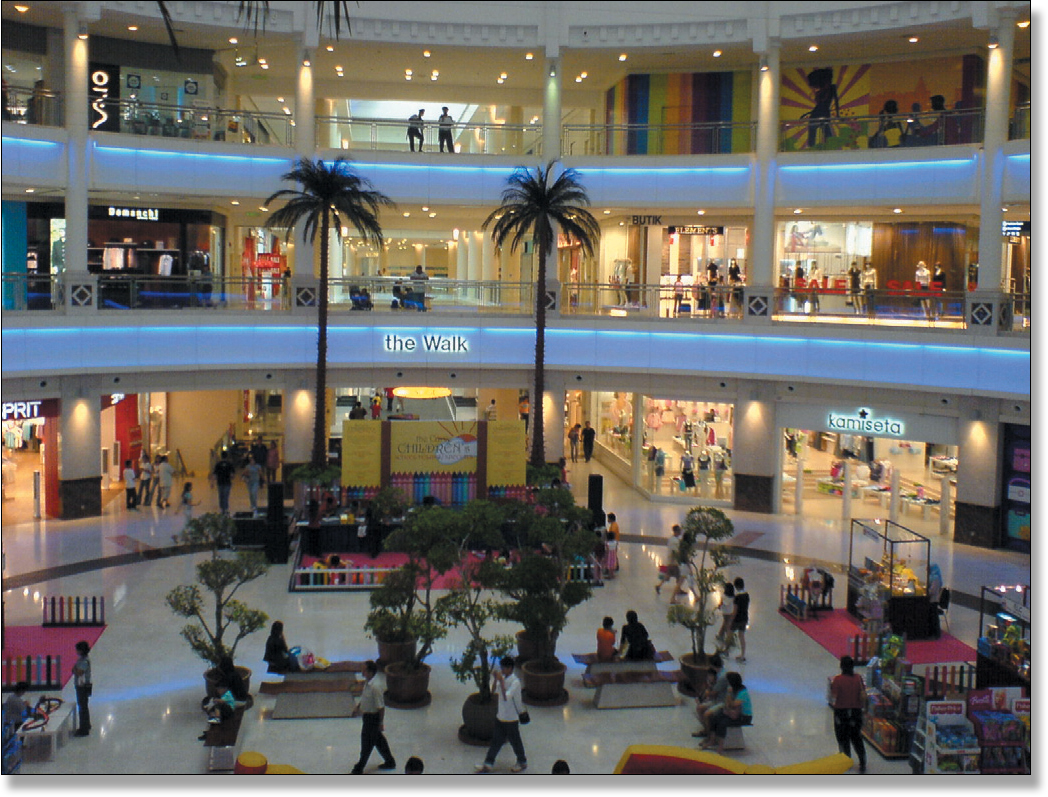
Good visibility of shops in a mall.

Good visibility of a retail outlet on a street
(courtesy of Kingsmen Creatives Ltd)
Position in the location — Shops located at intersection of 2 major streets.
2. Position in the location
There are three important issues to look into.
• Which part of the street or mall is the selected site situated? Shops located at the intersection of two major streets can bring more patronage. A small gift shop located at the end of a mall is not going to attract a lot of people unless it is a destination store such as a major department store or hypermarket.
• What are the shops next to and/or near the selected site?
A snack kiosk situated near a supermarket can have more business from the people who pass by the kiosk when they go to the supermarket. On the other hand, an apparel store should not be located next to a fast food restaurant. The smell of food is adverse to the image of the apparel store.
• Which level is the site located in a multi-storey building?
The ground or first level is always the best site. As the levels go higher, the rental of the shop is lower due to the lack of visibility. The basement of malls can be quiet and thus, not an ideal site too. However, there are many malls that have successfully drawn crowds to the basement by clustering food and entertainment-related stores in the basement. In addition, there are many malls that build connecting linkways in the basement to other malls so as to increase pedestrian traffic.
3. Size and shape of the unit
The total space needed for a unit is dependent on the types of products sold and the scope of business. In addition, a square-shaped or rectangular-shaped lot facilitates the placement of fixtures and maximises the usage of space. A shop with curved walls or elongated space is not ideal.
4. Space planning
The interior of a mall or location must be well organised to facilitate shoppers’ movement. Here, there are basically three areas to take note of:
• Walkways
Walkways that are too narrow obstruct traffic flow whereas walkways that are too wide distance shoppers from the shops.
• Location of common facilities
Restrooms, escalators, elevators and other facilities should be located at appropriate places and not at secluded corners that bring too much inconvenience to shoppers.
• Clear signage
A good location should also have sufficient and clear signage to help shoppers locate the shop units and the common facilities such as restrooms, elevators and the information counter.
5. Cost – Rental, operations and maintenance cost
The following terms of occupancy must be evaluated for each prospective site.
Buying a shop unit requires heavy capital investment. It may be a worthy investment if the real estate value increases. There are malls where all the shops are sold to individual retailers, and in such cases, it is often difficult to upgrade the malls or organise any promotional activities due to insufficient support from all the owners.
• Leasing
Leasing or rental minimises the initial investment. Rental is usually short-term and it allows flexibility in choosing another site. However, the landlord usually increases the rental rate when the location becomes popular. Find out more about the following matters pertaining to leasing:
– The type of lease — fixed rent or pegged to sales volume
– The duration of lease
– The flexibility of lease — renewal and termination options.
• Operations and maintenance
If a shop unit is on lease, study the leasing agreement carefully for the following details:
– Does the rental rate include or exclude additional operations and maintenance cost? It is common practice for mall management to charge retailers a monthly fee for maintenance and promotional expenditures.
– Does the agreement include property owner’s responsibilities on repairs, renovations and decorations of the location and site?
 Use an Evaluation Checklist
Use an Evaluation Checklist
One way to help retailers in their decisions is to use a checklist for both the general location and the specific site. An example of a checklist is shown on the next page.
 Confirm the Evaluation
Confirm the Evaluation
It is wise for the retailer to look up more information pertaining to the location and the site. Information can be sourced from newspapers, trade magazines, the Internet and television news reports. In addition, it is also helpful to consult or speak to current and/or previous tenants at the location and site to find out more information that cannot be observed by merely conducting the evaluations on the checklist.
Conclusion
It is not easy to find a suitable location and site, but it is not impossible.
Simple research and determined efforts can make the task fruitful!

